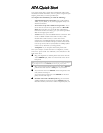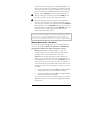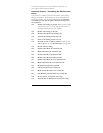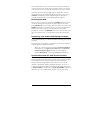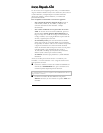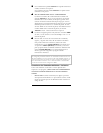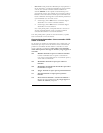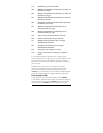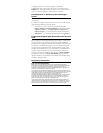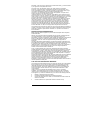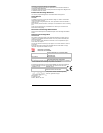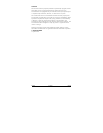
10
afterwards. In the event such a disconnection is deemed necessary, you will be advised
of your right to file a complaint with the FCC.
From time to time, the telephone company may make changes in its facilities,
equipment, or operations which could affect the operation of this equipment. If this
occurs, the telephone company is required to provide you with advance notice so you
can make the modifications necessary to obtain uninterrupted service.
There are no user serviceable components within this equipment. For repair and/or
warranty information, visit http://www.zoom.com.
It shall be unlawful for any person within the United States to use a computer or other
electronic device to send any message via a telephone facsimile unless such message
clearly contains, in a margin at the top or bottom of each transmitted page or on the first
page of the transmission, the date and time it is sent and an identification of the
business, other entity, or individual sending the message and the telephone number of
the sending machine or of such business, other entity, or individual. The telephone
number provided may not be a 900 number or any other number for which charges
exceed local or long distance transmission charges. Telephone facsimile machines
manufactured on and after December 20, 1992, must clearly mark such identifying
information on each transmitted message. Facsimile modem boards manufactured on
and after December 13, 1995, must comply with the requirements of this section.
This equipment cannot be used on public coin phone service provided by the telephone
company. Connection to Party Line Service is subject to state tariffs. Contact your state
public utility commission, public service commission, or corporation commission for
more information.
Industry Canada CS03 Statement
Note
: This CS03 statement applies only to the models that require CS03 compliance ,
models 5800-5804.
NOTICE: This equipment meets the applicable Industry Canada Terminal Equipment
Technical Specifications. This is confirmed by the registration number. The
abbreviation, IC, before the registration number signifies that registration was performed
based on a Declaration of Conformity indicating that Industry Canada technical
specifications were met. It does not imply that Industry Canada approved the
equipment.
The Ringer Equivalence Number (REN) for this terminal equipment is identified on the
bottom label of the equipment. The REN assigned to each terminal equipment provides
an indication of the maximum number of terminals allowed to be connected to a
telephone interface. The termination on an interface may consist of any combination of
devices subject only to the requirement that the sum of the Ringer Equivalence
Numbers of all the devices does not exceed five.
AVIS : Le présent matériel est conforme aux spécifications techniques d’Industrie
Canada applicables au matériel terminal. Cette conformité est confirmée par le numéro
d'enregistrement. Le sigle IC, placé devant le numéro d'enregistrement, signifie que
l’enregistrement s’est effectué conformément à une déclaration de conformité et indique
que les spécifications techniques d'Industrie Canada ont été respectées. Il n’implique
pas qu’Industrie Canada a approuvé le matériel.
L'indice d'équivalence de la sonnerie (IES) du présent matériel est montré sur l'étiquette
inférieure du produit. L'IES assigné à chaque dispositif terminal indique le nombre
maximal de terminaux qui peuvent être raccordés à une interface téléphonique. La
terminaison d'une interface peut consister en une combinaison quelconque de
dispositifs, à la seule condition que la somme d'indices d'équivalence de la sonnerie de
tous les dispositifs n'excède pas 5.
U.S. FCC Part 15 Emissions Statement
This equipment has been tested and found to comply with the limits for a Class B digital
device, pursuant to part 15 of the FCC Rules. These limits are designed to provide
reasonable protection against harmful interference in a residential installation. This
equipment generates, uses and can radiate radio frequency and, if not installed and
used in accordance with the instructions, may cause harmful interference to radio
communications.
However, there is no guarantee that interference will not occur in a particular
installation. If this equipment does cause harmful interference to radio or television
reception, which can be determined by turning the equipment off and on, the user is
encouraged to try to correct the interference by one or more of the following measures:
•
Reorient or relocate the receiving antenna.
•
Increase the separation between the equipment and receiver.
•
Connect the equipment into an outlet on a circuit different from that to which the
receiver is connected.
•
Consult the dealer or an experienced radio/TV technician for help.



